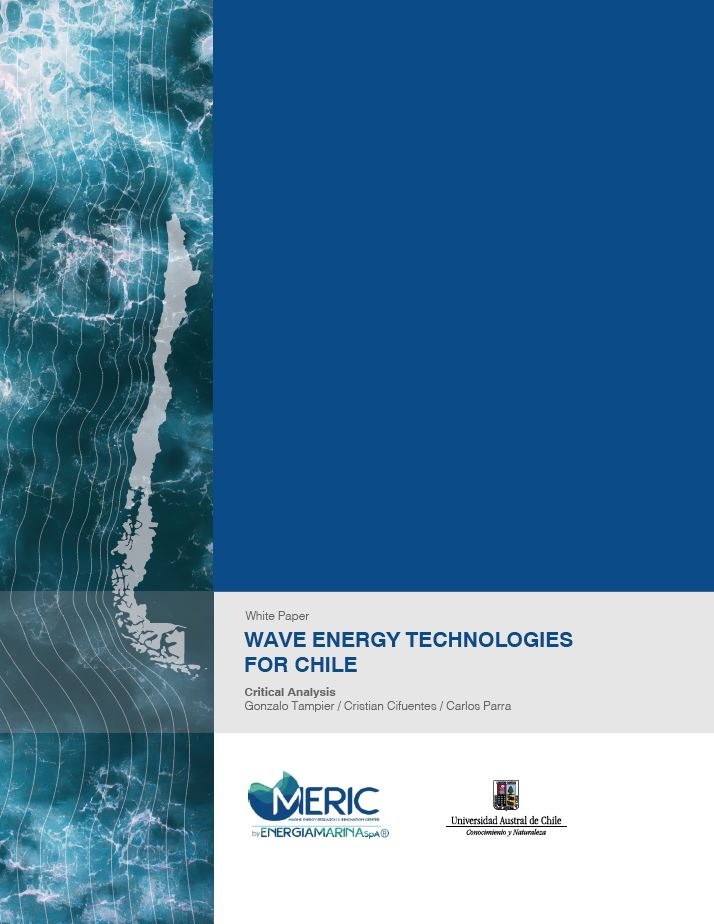
Wave energy technologies for Chile
Critical analysis
Parra, Carlos
Tampier Brockhaus, Gonzalo Andrés
Cifuentes Salazar, Cristian Alejandro
Colaborador:Tampier Brockhaus, Gonzalo Andrés (Traducido por)
Editorial:Energía Marina SpA
Materia:Maquinaria generadora y convertidores de energía
Público objetivo:Profesional / académico
Publicado:2024-03-11
Número de edición:1
Tamaño:8Mb
Soporte:Digital
Formato:PDF (.pdf)
Idioma:Inglés
Libros relacionados
Tecnologías de energía eólica offshore para Chile: perspectivas y desafíos - Aziares Aguayo, Natalia; Cifuentes Salazar, Cristian Alejandro; Cárdenas Cartes, Rosana; Álvarez Castillo, Katherine; Tampier Brockhaus, Gonzalo Andrés
Tecnologías de energía undimotriz para Chile - Tampier Brockhaus, Gonzalo Andrés; Cifuentes Salazar, Cristian Alejandro; Parra Contreras, Carlos Patricio
Reseña
Wave energy is a renewable energy source with great potential worldwide, with an estimated potential of 2985 GW considering only the coasts [1]. In Chile, a potential of up to 240 GW [2] is estimated, with a power density greater than 30 kW/m from latitude 27°S to the south. The current development of wave energy devices is at an early stage, due to multiple aspects such as its high costs at different phases of the projects and uncertainties about the performance of technologies. Currently, the levelized cost of energy (LCoE) is over 450 US$/MW and is expected to be between 100 and 200 US$/MWh by 2030 [3].
Considering that most wave energy technologies are still under development and demonstration phases, the contribution of wave energy to the global energy matrix remains low.
One of the main challenges for the coming years is to reduce costs and improve reliability and performance of systems [4], in order to ensure commercially competitive energy costs. Among the main cost items, capital costs (CAPEX) and operating costs (OPEX) are distinguished, as shown in Fig. 1. The LCoE study prepared by MERIC and Fundación Chile in 2018 [5] presents the distribution of capital costs for a marine renewable energy project in Chile.
The estimated cost of wave energy is far above other conventional or renewable power generation technologies [3] and must be reduced so that it can compete in the power generation market. The experience of developing other renewable energy production technologies shows us a path of cost reduction over time, as experience and volume of installed power increases.
To achieve this cost reduction in Chile, it is necessary, in addition to an active participation in the development of technologies, to face some additional challenges, particularly those related to supply chain, survival of extreme events sites availability, and coexistence of activities on the marine space. The document presented here, based on recent research and the experiences acquired throughout the execution of the MERIC project, seeks to contribute to some of these aspects and intends to be a useful guide for the selection of adequate wave energy technologies for the particular conditions of the Chilean coast.




